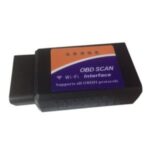For years, a debate has raged within the E36 BMW community, particularly amongst those undertaking M52 or S52 engine swaps: OBD1 or OBD2? Many cling to the outdated notion that OBD1 is superior, often citing myths that simply don’t hold water. Let’s dismantle these arguments and clarify why, in most modern scenarios, OBD2 is the undeniably smarter choice for your E36 project.
Common misconceptions surrounding OBD1 for M52/S52 swaps often include claims of increased horsepower and simplified wiring. It’s crucial to understand: running your M52 or S52 on OBD1 does NOT unlock hidden power reserves. This is a fallacy. Furthermore, the wiring complexity is negligible, especially when utilizing expert wiring services. The assertion that OBD1 is inherently easier is simply untrue. You also don’t lose the ability to run an M50 manifold with OBD2, another point of confusion for some. Concerns about immobilizer systems (EWS) are also unfounded; EWS is easily bypassed or flashed out of OBD2 ECUs just as it is with OBD1. Finally, the tuning landscape is equally robust for both systems. Custom tunes are readily available for both OBD1 and OBD2, and even emissions-related components like the secondary air pump and EVAP system can be electronically removed from the OBD2 ECU programming.
So, if the perceived advantages of OBD1 are myths, what are the concrete benefits of opting for OBD2 in your E36 M52/S52 swap? The advantages are significant and practical:
Firstly, cost savings and convenience are immediate. When sourcing your M52 or S52 engine, it likely comes complete with its original OBD2 sensors, wiring harness, and ECU. Reusing these components is not only economical but also streamlines the installation process.
Secondly, OBD2 offers a vastly superior diagnostic experience. The OBD2 ECU is demonstrably smarter and more sophisticated than its OBD1 counterpart. This translates to enhanced troubleshooting capabilities. OBD2 systems excel at pinpointing even minor issues, providing Check Engine Lights (CELs) and detailed diagnostic trouble codes that guide you directly to the problem. This capability is a game-changer compared to the often vague and less informative nature of OBD1 diagnostics, which can leave you chasing phantom issues and replacing parts unnecessarily. Imagine easily diagnosing a faulty cam sensor or coil pack simply by plugging in an OBD2 scanner and reading the code – a stark contrast to the frustrating guesswork often associated with OBD1 systems.
Furthermore, OBD2 grants you access to live engine data, mirroring the capabilities of any modern OBD2-equipped vehicle. This invaluable feature allows you to monitor crucial parameters in real-time, such as engine temperature, vehicle speed, and oxygen sensor adaptations. This live data stream empowers you with a deeper understanding of your engine’s performance and health, aiding in preventative maintenance and performance tuning.
Finally, the enhanced processing power and refined engine management strategies of OBD2 generally result in a cleaner and smoother running engine. This improved engine management, born from a smarter ECU, can even contribute to increased efficiency and potentially more power compared to a poorly diagnosed or maintained OBD1 setup, indirectly refuting the myth of OBD1 power gains.
In conclusion, while nostalgia or misinformation may fuel the preference for OBD1 in some E36 M52/S52 swaps, a pragmatic evaluation reveals OBD2 as the clear winner. Its superior diagnostic capabilities, cost-effectiveness, and potential for a more refined engine operation make it the intelligent choice for your project. Embrace the smarter technology; your E36 will thank you.
